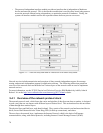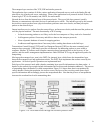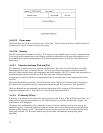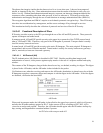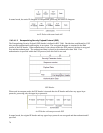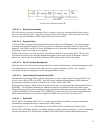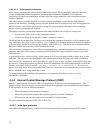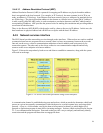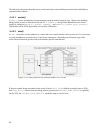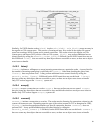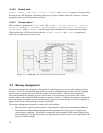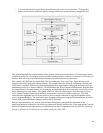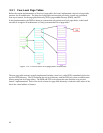
An IP Packet with tunnel mode ESP
5.4.3.4.1.3 Security Associations
RFC2401 defines a Security Association (SA) as a simplex or one-way connection that affords security
services to the traffic it carries. Separate SAs must exist for each direction. IPSec stores the SAs in the
Security Association Database (SAD), which resides in the Linux kernel.
5.4.3.4.1.4 Security Policy
A Security Policy is a general plan that guides the actions taken on an IP datagram. Upon processing an
incoming or outgoing IP datagram, the security policy is consulted to determine what to do with the IP
datagram. One of three actions will occur: the datagram is to be discarded, the datagram is to bypass IPSec
processing, or IPSec processing is to be applied.
If IPSec processing is to be done, the policy will indicate which SA to access in the SAD. This SA will
indicate the keys and service and other information related to the securing of the IP datagram. Security
policies are stored in the Security Policy Database (SPD), which resides in the Linux kernel.
5.4.3.4.1.5 SA, SP, and Key Management
There are services for both manual and automated SA creation and maintenance. Manual management refers
to an administrative user interface that allows for the creation and deletion of policy, SAs, and keys.
Automated SA and key management is done through the IKE protocol.
5.4.3.4.1.6 Internet Key Exchange Protocol (IKE)
The Internet Key Exchange (IKE) protocol is designed so it can be used to negotiate SAs on behalf of any
service, such as IPSec, RIPv2, or OSPF. Each service has a Domain of Interpretation (DOI) document
describing the attributes required to establish an SA. IPSec’s DOI is RFC 2407.
IKE has two basic phases, which it takes from Internet Security Association and Key Management Protocol
(ISAKMP). The first phase establishes an authenticated and secure channel between two remote peers.
During this phase the two peers exchange necessary information and keying material with each other. The
result is an ISAKMP SA for each peer. This ISAKMP SA is then used to set up a secure and authenticated
traffic stream when the two peers wish to negotiate an IPSec SA or an SA for any other service.
5.4.3.4.1.7 Socket API
The PF_KEY API, defined in RFC 2367, is a socket protocol family that allows userspace manual and
automated key management tools to communicate with the kernel.
Linux also has xfrm_user, which makes use of the Netlink API, to communicate with the kernel.
The PF_KEY API defines interfaces for adding, deleting, updating, and retrieving SAs as well as maintaining
the state and lifetime. The API has been extended in the Linux kernel to include SPD management too.
77




